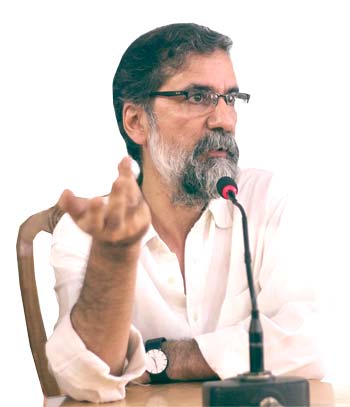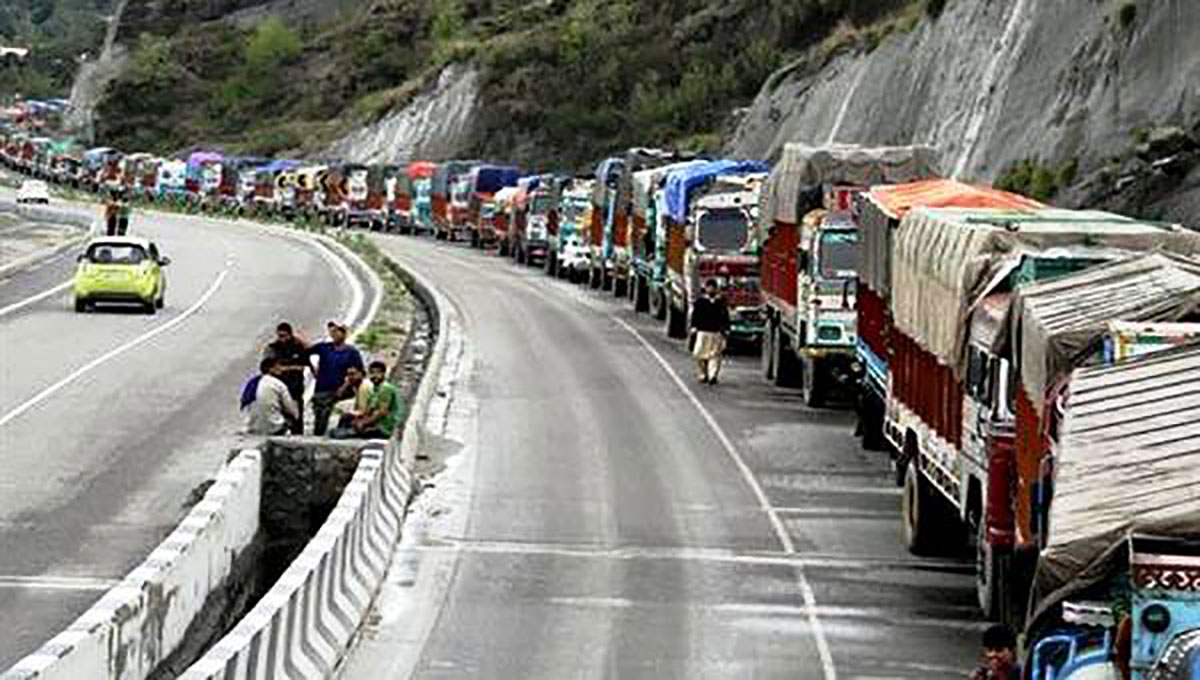Independent filmmaker Sanjay Kak of Jashn-e-Azadi fame tells Junaid Nabi Bazaz how his new film Red Ant Day which talks about Maoist struggle is relevant for Kashmiri audience and how censorship is used against those who question the status quo in the society.

KL: In documenting the Maoist struggle did you feel that what you were doing was important, the Maoist’s being one of the misrepresented groups in India?
SK: I think it’s important to remember that Red Ant Dream is not just about the Maoists. It’s also about the very brave adivasi resistance to mining in Odisha, and about an older socialist tradition in Punjab. These are all very important trajectories of resistance, and to me it’s critical that we remember that they are interconnected in some very fundamental ways. In the end, the film is really not about documenting the Maoist struggle, but a reflection on the persistence of the idea of revolutionary change. That is the Red Ant Dream…
KL: By making Red Ant Dream, or Jashn-e-Azadi in Kashmir, do you as a filmmaker believe in the struggle of the people you have documented?
SK: Absolutely. Not just as a filmmaker but also as a political person, I do agree with the struggles of the people that are represented in these films. Even though I may not necessarily believe in every tactic of those involved in the struggle, or every dimension of their belief systems.
KL: Are you trying to balance your film by giving equal space to both pro and anti-Maoist narratives? What are you intending to achieve with this?
SK: I’m relieved that you find that balance in the film – I’m used to being attacked for not being balanced, of not being critical enough of the Maoist narrative. In Mumbai a fellow filmmaker actually thought the film was like a propaganda film for the Maoists! That is what I like about the form of the essay-documentary, it allows audiences to read beyond the obvious intentions of the filmmaker, and it allows us all to confront our own prejudices.
KL: How does media censorship affect a filmmaker and his/her work?
SK: Censorship will always be an issue for those who choose to speak against the grain, for those who question the status quo. That should be taken as a given. If its not the obvious and crude methods of the Censor board, or the bullying tactics of the mob that disrupts a screening, then it will be the cold, invisible control exercised by money: we often forget how much of a censorial device funding and money can be. But technology has brought along some quite remarkable ways out of this straitjacket. There has been a huge transformation in media production led by the digital revolution, and of course in dissemination too. A decade ago could we imagine that a small projector and a laptop could transform a seminar room of a Srinagar hotel into a cinema for more than 200 people? And of course, now there is the Internet.
KL: Like Jashn-e-Azadi you have once again used poetry to invoke the long tradition of revolutionary struggle, beginning with Bhagat Singh. Do you see in poetry a window to the soul of any struggle?
SK: I think poetry is often the only way out for those who live in very oppressive circumstances. Just look at Kashmir, look at the ways in which Shiekh-ul-Alam was able to express the essential dilemmas before Kashmiris so many centuries ago. And of course in so many of these places, the limited spread of the written word amongst ordinary people means that the distilled, compact nature of poetry makes it a very charged form of communication.
KL: Being a Kashmiri, what prompted you to make a movie on the Maoist struggle in India?
SK: In Srinagar, minutes before the screening of Red Ant Dream, a journalist asked me–with considerable disappointment in his voice–why an audience of Kashmiris should be watching a film about faraway struggles. I was really taken aback by that question, by the assumption that if it was not about Kashmir, or if it was about a struggle in India, it ought to be of no interest to Kashmiris. I find that narrow, and parochial, and in the longer term, not really a political response. In the Narmada valley, where I made a film, there used to be a slogan: Hindi, Marathi ya Gujarati, Ladne wale Ek Hi Jaati. (Whether you speak Hindi, Marathi or Gujarati, those who struggle are One People). That might be an oversimplification, but it has got something in it.
KL: With Kashmiri films like Harud, Valley of Saints and Ocean of Tears attracting global audiences, how do you see this change as a filmmaker?
SK: I think it’s a wonderful and welcome development. But I also think that along with attracting global audiences we must also learn to speak to ourselves, to our Kashmiri selves, and make films that challenge our own ways of thinking too. Sometimes speaking continuously to the outside world puts a great pressure on our voices, we get particular accents, in a metaphoric way!
KL: What is your message to the Kashmiri filmmakers?
SK: A message to my peers? That would be both condescending and presumptuous, would it not be? I look forward to dialogue, and a collective sharpening of our skills.
KL: Is there a film on Kashmir in the pipeline? What are your new projects?
SK: As an independent filmmaker, when you finish a film that’s only a third of your work done. For the next 6 months I will have to be traveling with the film, both here and abroad, reaching out to a certain critical mass of viewers, because without that a film can simply disappear. No new film on Kashmir yet, although every time I come, I think of a hundred ideas, for things that I believe will make substantial films, or things that I want to write about. But even without a ‘project’ in my head, my commitment to the idea of Kashmir is total.
















I congratulate Shri Sanjay Kak ji for making a film on a burning issue by taking the audience to the realities in which poor tribals have been trapped to fill the coffers of industrial and mining corporations. Bhagat Singh’s dreams and concerns before independence are also nicely reflected exposing that for poor, our leadership has no time who wrongly try to address the problem with bullets which only adds fuel to the fire.